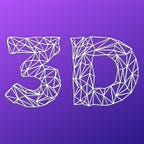TOP AR TRENDS THAT ARE SET TO TAKE 2021 BY STORM
The year 2020 has been unforgettable for all of us. In one aspect or the other, our dependency on surrealism and longed-attachment have varied, yet been a stable tool of usage. Most of the industries faced severe crises, and so augmented reality technologies were seen booming even during the pandemic.
With “try-before-you-buy” shopping experience, the COVID-19 has accelerated and redefined the retail sector as more people are shifting to digital shopping platforms (as said in earlier blog), and businesses have also increasingly started to adopt AR-VR solutions to better collaborate with their remote employees. Other sectors like home entertainment, EdTech are also making use of Augmented Reality. Overall, the year 2021 looks promising for AR.
In this article, we have curated the top trends of AR that will shake up this year and bring in a lot of surrealistic difference.
More of VR-AR in Entertainment:
The Media and Entertainment industry is among the hardest hit by the COVID crisis. AR will be a boost for event organizers to attract more visitors and participants to their music concerts, sports, museums, theatres, amusement parks, and what not. For example, augmented reality can help broadcast live sport events in a 360-degree format providing an immersive experience to fans; fans can get significant real-time info like weather parameters, players’ background, etc through this very scheme of things.
Home entertainment is another area in which the technologies will have a higher impact. Imagine how nice it would be if your favourite movie characters feature in your living room or you get a closer viewing experience of your favourite TV show or movie. With studies estimating the global AR market to grow at a CAGR of over 35% during 2020–2024, we can’t wait to see some innovative entertainment products!
Integration with 5G Network:
Super-Fast mobile networks that could transfer up to 3 gigabits per second as against the average home broadband that delivers under 100 megabits per second, offers a better VR and AR experience. By combining with 5G, AR and VR designers can offer experiences in low-powered environments in low bandwidth, thus resulting in cheaper devices and headsets and more realistic VR simulations.
However, creating AR and VR experiences does not come without technical challenges. Combining and synchronizing the real world and the motions of the user with a digital world requires a massive amount of graphical rendering processes. Because the graphics require heavy rendering, on-device processes are augmented by splitting workloads between the AR/VR device and the edge cloud.
Graphics rendering on the edge cloud augment latency-sensitive on-device head tracking, controller tracking, hand tracking and motion tracking to photon processing. This concept is called Split Rendering. But when the rendering is done in the cloud, and not on a mobile device, you also need a fast and reliable 5G connection to deliver the final experience to the user.
AR use these cases to require stringent network requirements such as low latency, high reliability and high bandwidth. Ericsson has optimized its 5G core and radio infrastructure to offer an unmatched high-quality end-user VR experience. As you see in the below pictures, these use cases can be delivered to end users either via a dedicated private network or via a network slice over a public network.
AR along-with VR for Remote Working:
As companies across the globe continue to work from home, remote working is now the hot topic, the new norm. Augmented reality in business can help engage with employees in everyday activities, speed up the on-boarding process, facilitate training, collaborate with co-workers in the physical space, and more.
For example, AR-VR tools help employees connect with technicians on remote, increasing first-time fix rates, reducing downtime and travel costs, and increasing productivity.
Interestingly, studies conclude a 204% growth in meeting participants among clients and a 242% growth in the number of meetings, and 75% of clients feel they can work efficiently and achieve their goals through VR.
AR Cloud will drive the Next-Gen Immersive Experience:
AR Cloud could be said as the digital version of the Earth. All that you see around your environment would be digitally fuelled with the cloud knowledge of AR. It’s Cloud provides us with information and services on all physical aspects surrounding us.
To understand better, just imagine a scenario where you are visiting a country as a foreigner. Due to sudden change in weather conditions, you are in need of a jacket. You put on the AR glasses and look around to find a nearest apparel store. Once you enter the store, the cloud could show if the desired size and colour of the jacket are available. Your shopping will be done in just a few minutes!
Instead of scrolling through endless search engine pages, AR cloud creates an immersive experience by combining the digital and physical world overlaid onto people, objects and locations.
To know more about how your day-to-day life can be influenced by AR massively by the means of XperienZ, head over to xperi.nz, or simply follow us at on of our social handles — FaceBook, Instagram, and more!
“XperienZ Life to the Fullest!”
